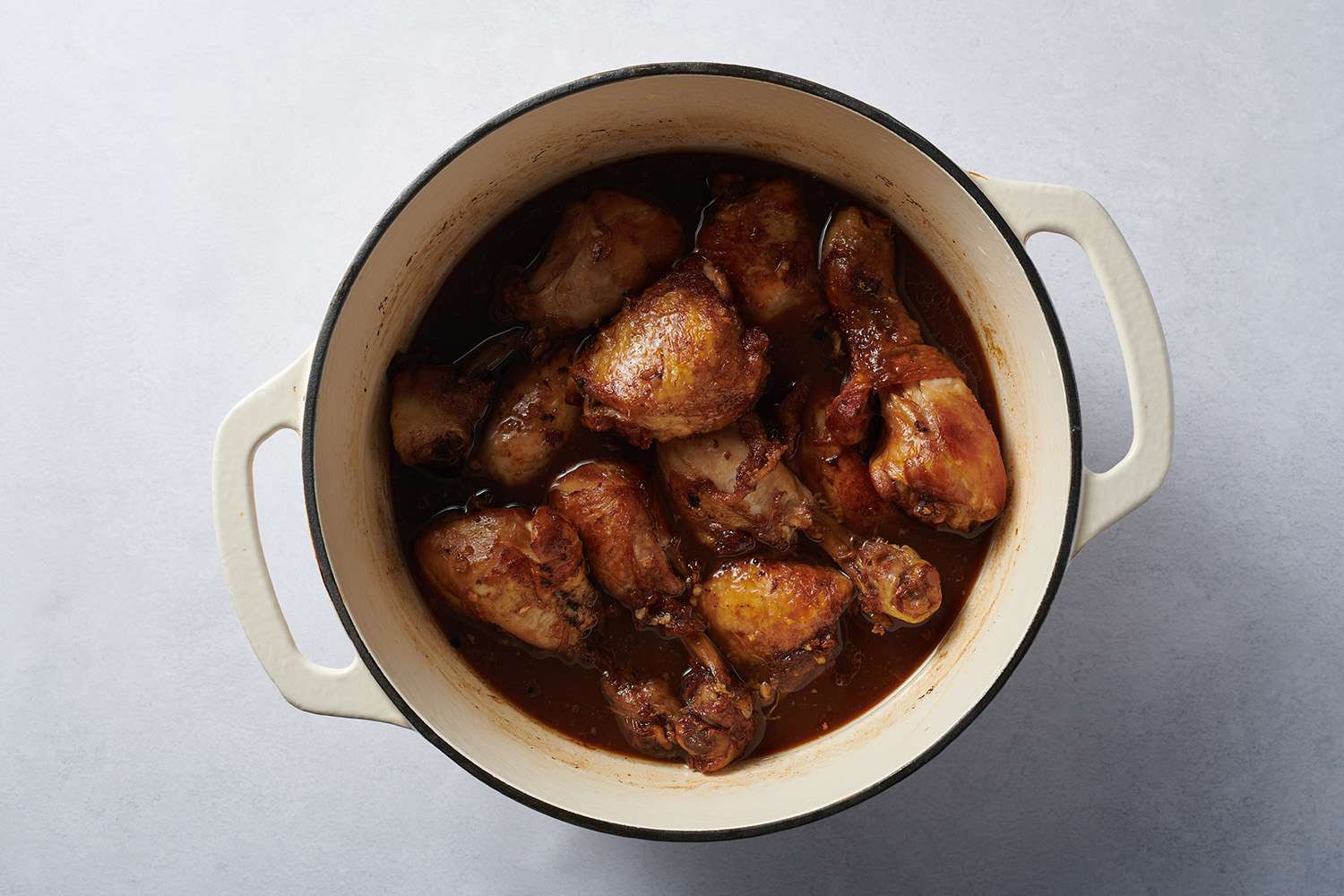What started as a means of preservation, adobo is now considered the “National Dish of the Philippines.” Due to the geographical makeup of the Philippines, adobo varies slightly from region to region but what most Filipinos agree on is that the main ingredients consist of soy sauce (or salt), vinegar, and garlic. Black peppercorns and bay leaves are also key. The main proteins used are chicken or pork or a combination of the two. You can make squid or vegetable versions as well.
Vinegar: The Key to Adobo
Vinegar is crucial in making adobo. The acidity of vinegar was used to prevent the growth of harmful bacteria in the original dish, though due to modern food safety and storage methods the vinegar is now primarily valued for adding a tangy flavor. The most common vinegar used in the Philippines is cane or coconut. You can find these vinegars at your local Asian market or online. An alternate is rice wine or apple cider vinegar. I find white vinegar to be too harsh for this recipe.
How To Make Chicken Adobo
The adobo cooking method is a braise typically followed by a pan-fry. At my restaurant, Kuma Inn, we finish the dish by pan-frying, but sometimes we finish it on the grill, in the sally (broiler), or the deep fryer which all yield tasty results. If pan-frying is too messy at home, I would suggest finishing the dish under the broiler.
What To Serve With Chicken Adobo
Serve chicken adobo with plain white rice or garlic fried rice.
Tips for Making Chicken Adobo
- You can use this adobo ratio/method with other proteins or vegetables. Adjust the cooking times based on the protein or vegetable used.
- For the most tender and luscious chicken adobo, use dark meat chicken such as thighs, legs, and wings. These cuts contain more fat and collagen, which melts into the broth during cooking, giving it flavor and body. What's more, these cuts of chicken are resistant to overcooking, meaning they can be cooked to a higher internal temperature than chicken breast without drying out or toughening.
- Adobo tastes even better the next day when the braising liquid has more time to marinate the chicken.
- While shallow-frying the cooked chicken gives it the crispiest skin, if you'd rather not fry you can brown them in just a little oil in a skillet or broil them on a cooling rack set in a baking sheet on the middle rack of the oven (browning on the top rack will cause them to burn).
- Cook the chicken at a gentle simmer to avoid toughening the meat. Lift the lid off the pot occasionally to make sure the liquid isn't boiling. If you're having trouble regulating the heat, you can place the lid partially on the pot or remove the lid entirely to reduce the temperature quickly.
“This is a wonderful combination of crispy, flavorful chicken and rich, tangy sauce. Great served with rice and sprinkled with scallions. Be careful when frying if your chicken pieces are still wet from the braising liquid as the oil may splatter.” —Julia Hartbeck
A Note From Our Recipe Tester
Ingredients
-
3/4 cup soy sauce
-
1 cup cane vinegar
-
1 cup water
-
6 cloves garlic, crushed
-
3/4 teaspoon black peppercorns
-
2 bay leaves
-
3 pounds bone-in chicken parts
-
2 cups vegetable oil
Steps to Make It
-
Gather the ingredients.

The Spruce/Julia Hartbeck
-
In a large Dutch oven or other heavy-duty pot, combine the soy sauce, vinegar, water, garlic, peppercorns, and bay leaves.

The Spruce/Julia Hartbeck
-
Add the chicken and marinate for 30 minutes at room temperature.

The Spruce/Julia Hartbeck
-
Place the pot over medium-high heat, bring to a boil, reduce heat to low to simmer, and cover. Cook at a gentle simmer until the chicken is tender, 30 to 40 minutes.

The Spruce/Julia Hartbeck
-
Remove the chicken from the braising liquid and place on a rack to dry.

The Spruce/Julia Hartbeck
-
Increase the heat to medium-high and reduce the braising liquid until the flavors are more concentrated, about 10 minutes. This will be your sauce. Set aside until the chicken is fried.

The Spruce/Julia Hartbeck
-
Add oil to a deep, heavy skillet over medium-high heat. When the oil reaches 350 F on an instant-read thermometer, and add the chicken in batches to not crowd the pan. Fry until golden brown on all sides, 6 to 8 minutes per batch.

The Spruce/Julia Hartbeck
-
Return the chicken to the Dutch oven with the reserved sauce. Toss the chicken in the sauce, then serve.

The Spruce/Julia Hartbeck
How To Store
Refrigerate leftover chicken adobo in an airtight container for up to 5 days. Reheat by gently simmering it in its sauce (you may need to dilute it with water or chicken stock) or in the microwave.
Recipe Variations
- If you can’t find cane vinegar, coconut vinegar, rice wine vinegar, or apple cider vinegar can be substituted.
- Adjust the vinegar based on how sour you like your adobo. I prefer sour.
- In some regions of the Philippines, cooks reduce the braising liquid all the way down or add a splash of coconut milk to finish the sauce.
- You can also spice it up with sliced Thai chilies. Add one to three chiles depending on your preference.


